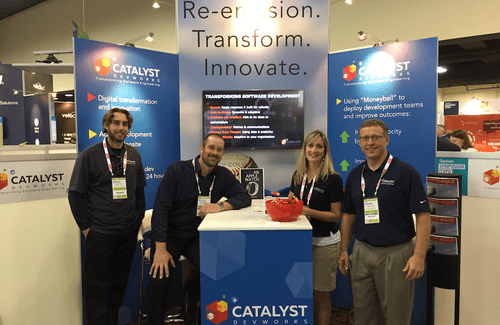Trade shows can be overwhelming. Thousands of people, hundreds of vendors, dozens of sessions all sprawling over five days. There’s so much to absorb.
Having the weekend to reflect and mentally sort through it all, here’s what we learned at the Gartner Symposium and ITxpo.
1. Business and IT are still looking for equilibrium in application development. Both sides agree that applications can be business critical and centers of profit, rather than just back office tools. But they’ve yet to figure out how to fully make the transition that allows these types of apps to be quickly developed and deployed.
This contention manifests when product/business leaders complain about CIOs hampering their ability to pick their own app providers, and CIOs complain that they aren’t first consulted when the business needs app development work done. For the overall enterprise to succeed, this tension must be resolved with better and more responsive development capabilities.
2. Organizations must continue to increase innovation. This came straight from the mouths of Garner analysts. Looking at data, they determined that top performers focus on innovation. In fact, innovation comprises 77 percent of top performers IT spend, compared to just 23 percent for operations.
The reason for this, according to the analysts, is that top performers realize there will always be a new technology to adopt. It’s what you do with that technology (hint: it’s innovation) that is the key competitive advantage. In a digitally competitive marketplace, much of that innovation comes from applications that help companies be more profitable, streamlined and provider better services/experience to customers and clients.
3. The development mix is expanding. At this year’s show, there was a definite awareness of the advantages of onshore development and that offshore work might be more appropriate for only certain development needs, largely infrastructure and back office support.
Many of the people we talked with have a mix of development resources: in-house, onshore and offshore. Each has its own specific purpose and priorities. This mix allows for more focused work that allows each to produce their best work.
4. We’re in the middle of digital transformation. This again comes directly from Gartner. No industry has yet reached a digital tipping point.
This data was reflected in the convention’s attendees. I can’t remember one person who said his/her organization has digital totally under control. People were more likely to say they were working on it, but with some resistance from C-suite players who are wary/reluctant to change.
In the phrase “digital transformation,” it seems that the transformation part is proving to be the more difficult aspect. It’s a process that, while difficult, is something organization in every industry will encounter, if they haven’t already.
So where does all this leave us?
It leaves us feeling confident in the value that Catalyst offers businesses looking to increase innovation, expand their development mix, find fast solutions to business-critical needs and truly transform their IT organizations. Our abilities to ramp faster and produce at a higher quality while consulting and coaching at the same time means we’re well positioned to alleviated the growing pains of a digital transformation.
Other Gartner 2016 blog posts:


